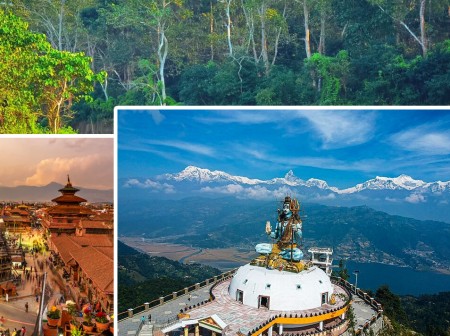
History of the Tenzing Hillary Everest Marathon
- soleencounters
Introduction
High in the Himalayas, where the air is thin and the landscapes awe-inspiring, runners gather every May for the Tenzing Hillary Everest Marathon. Recognized as the highest marathon in the world, this extraordinary race combines endurance, adventure, and cultural heritage. More than just a test of physical limits, it is a tribute to two legendary mountaineers: Sir Edmund Hillary and Tenzing Norgay Sherpa, the first climbers to successfully summit Mount Everest on May 29, 1953.
Table of Contents
The marathon not only celebrates their achievement but also symbolizes the courage, resilience, and camaraderie of the Sherpa people and adventurers worldwide. To understand the significance of this event, let’s explore the fascinating history of the Tenzing Hillary Everest Marathon and how it has grown into a world-class adventure race.
Origins of the Tenzing Hillary Everest Marathon
The story of this marathon begins with the golden year of 1953. When Hillary and Tenzing reached the summit of Mount Everest, they forever changed the history of mountaineering. Decades later, to mark the 50th anniversary of the first ascent in 2003, the idea of organizing a marathon from Everest Base Camp to Namche Bazaar was born.
This inaugural event was not just a race but a celebration of human achievement, Sherpa culture, and Nepal’s growing reputation as a global adventure destination. The first edition drew international athletes, media attention, and immense local pride. Its success transformed it into an annual event, held every year on May 29—the exact day Hillary and Tenzing stood atop the world.
Why May 29 is So Important
The date of the marathon is symbolic. May 29 is the day in 1953 when Everest was first conquered. Every year, hundreds of athletes, locals, and spectators gather to honor this legacy. The marathon embodies the spirit of that first ascent: perseverance, determination, and teamwork.
By running the marathon, participants trace the footsteps of climbers and Sherpas, paying tribute not only to Hillary and Tenzing but also to the countless unsung heroes who have supported Everest expeditions.
Growth of the Event Over the Years
Since its inception, the Tenzing Hillary Everest Marathon has steadily grown in popularity:
-
From a modest beginning in 2003, it has expanded into one of Nepal’s most anticipated international sporting events.
-
Runners from over 20 countries participate each year, turning it into a global festival of adventure.
-
The race has become a platform to promote eco-tourism, sustainable trekking, and Sherpa heritage.
What started as a one-time event has evolved into a lasting legacy that highlights Nepal’s role as the ultimate adventure destination.
The Race Route: Following the Trails of the Sherpas
One of the most unique aspects of the Everest Marathon is its route. Starting at Everest Base Camp (5,364 m), the marathon descends through iconic Sherpa villages, rhododendron forests, suspension bridges, and high-altitude trails before finishing in Namche Bazaar (3,440 m).
Key highlights along the route include:
-
Everest Base Camp: The starting point at the foot of the world’s highest peak.
-
Gorakshep & Lobuche: High-altitude settlements where trekkers often rest before summit attempts.
-
Tengboche Monastery: A spiritual and cultural hub in the Khumbu region.
-
Namche Bazaar: The vibrant Sherpa town and the finishing line of the marathon.
This route not only challenges runners physically but also offers unmatched Himalayan scenery. For those who dream of experiencing this journey without competing, the Everest Base Camp Trek offers a similar trail experience.
Categories of the Marathon
Over time, the event has expanded into multiple race categories to accommodate different levels of participants:
-
Full Marathon (42.195 km): The original and most iconic race, starting from Everest Base Camp.
-
Half Marathon (21 km): A shorter but equally breathtaking route, ideal for adventure runners.
-
Ultra Marathon (60 km): For extreme endurance athletes, this category tests the absolute limits of stamina.
These categories ensure that runners of varying skill levels can take part while experiencing the Himalayas in their own way.
Cultural and Local Significance
The Tenzing Hillary Everest Marathon is not only an athletic event but also a cultural celebration. For the Sherpa community, it is a moment of pride and recognition of their pivotal role in the history of mountaineering. Local monasteries often bless the participants before the race, adding a spiritual dimension to the event.
Additionally, the marathon promotes sustainable tourism by encouraging participants and organizers to respect the environment, minimize waste, and contribute to local development projects. This ethos aligns with the values of responsible trekking in Nepal.
Training and Preparation for Participants
Running a marathon at high altitude requires more than just physical fitness. Participants usually arrive in Nepal weeks before the race for acclimatization, often combining their preparation with the Everest Base Camp Trek.
Key preparation tips include:
-
Acclimatization: Essential to prevent altitude sickness and improve performance.
-
Trail Running Experience: Training on mountain terrain is critical.
-
Gear & Clothing: Proper running shoes, layered clothing, and hydration systems are must-haves.
For those planning to join, working with experienced local operators like Sole Encounters Trekking ensures proper guidance, safety, and logistics.
Best Time to Join the Marathon
The marathon is always held on May 29, but preparation begins weeks in advance. Spring in the Everest region (April–May) offers stable weather, clear skies, and ideal conditions for trekking and acclimatization. This makes it the best season not only for the marathon but also for other classic treks like the Everest Panorama Trek.
How to Participate in the Tenzing Hillary Everest Marathon
Joining the marathon involves more than registering for a race—it’s an expedition. Participants must trek to Everest Base Camp, often taking 10–12 days for acclimatization. Tour operators like Sole Encounters Trekking provide comprehensive Everest Marathon packages, covering logistics such as:
-
Kathmandu stay and permits
-
Domestic flights to Lukla
-
Guided trek to Everest Base Camp
-
Accommodation and meals along the route
-
Race registration and support
If you are inspired to be part of this legendary event, check our official package: Tenzing Hillary Everest Marathon.
Conclusion
The history of the Tenzing Hillary Everest Marathon is deeply rooted in the legacy of mountaineering, Sherpa culture, and Nepal’s unique position as the ultimate adventure destination. From its humble beginnings in 2003 to its status today as the world’s highest and most iconic marathon, it continues to attract runners and explorers from around the globe.
Whether you dream of running the race or simply trekking to its trails, this event is an invitation to celebrate courage, endurance, and the beauty of the Himalayas.
To learn more, explore our detailed package: Tenzing Hillary Everest Marathon, or talk to our experts to plan your adventure. For inquiries, feel free to contact us.
Recent Posts
.jpg)
3rd Jul, 2025
.jpg)
4th Jul, 2025
.jpg)
4th Jul, 2025
.jpg)
7th Jul, 2025
.jpg)
8th Jul, 2025
.jpg)
8th Jul, 2025
.jpg)
8th Jul, 2025

10th Jul, 2025








